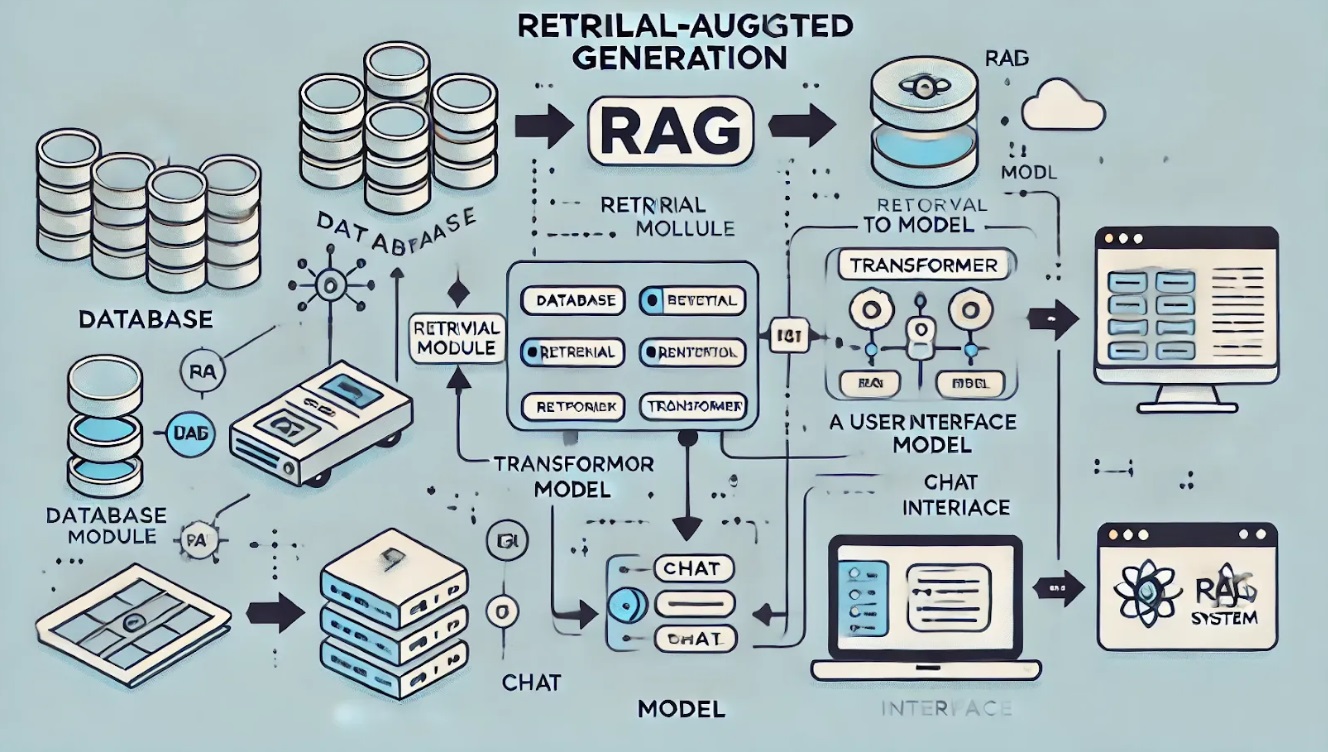Introduction
Small businesses generate vast amounts of data, from customer interactions and inventory records to sales transactions and business reports. However, efficiently retrieving and utilising this data can be challenging. A Retrieval-Augmented Generation (RAG) based database offers an innovative solution by combining advanced search capabilities with generative AI models to provide insightful, context-aware responses. This blog explores the steps involved in building a RAG-based database tailored for small businesses.
1. Defining the Scope and Purpose Before developing a RAG-based system, it’s crucial to determine its objectives and use cases:
- Identify Business Needs: Small businesses may require AI-driven support for customer queries, automated reporting, inventory management, or business intelligence.
- Determine Key Data Sources: Data can come from various sources, including transaction histories, product catalogs, customer feedback, emails, and support tickets.
- Establish Goals: The system should streamline operations, enhance decision-making, and reduce manual effort by providing fast, accurate, and context-aware responses.
2. Data Collection and Structuring A well-organised database is essential for effective retrieval and generation.
- Structured Data: Includes product details, customer records, and sales data stored in relational databases or spreadsheets.
- Unstructured Data: Includes emails, customer reviews, chat logs, and documents from various sources.
- Data Indexing: Efficient indexing techniques, such as vector embeddings, keyword tagging, and metadata classification, should be implemented to facilitate quick and accurate retrieval.
3. Choosing the Right Retrieval and Generative Models To maximise efficiency, the RAG system should utilise specialised retrieval and AI models:
- Retrieval Model: Use vector-based search engines such as Elasticsearch, FAISS, or Pinecone to enable semantic search and rapid information retrieval. Alternatively, implement traditional databases with filtering or keyword-based search for structured data.
- Generative AI Model: Employ language models like GPT-4 or domain-specific models to generate coherent responses based on retrieved data. Fine-tune the model to improve accuracy for industry-specific queries.
- Embedding Models: Utilise models like Sentence-BERT or OpenAI Embeddings to convert textual data into vector representations, making it easier to retrieve relevant information.
4. Integrating Retrieval with Generation The RAG system should efficiently combine retrieval and generative AI to enhance decision-making:
- Query Processing: When a user submits a query, the system first retrieves the most relevant data.
- Response Generation: The retrieved data is then fed into the language model to produce a well-structured and contextually relevant answer.
- Example Use Case: For a query like “What were my top-selling products this month?”, the system fetches recent sales data and generates an insightful summary.
5. Developing the User Interface (UI) A seamless UI is beneficial for user adoption.
- Search Interface: Design a user-friendly interface, such as a chatbot or structured query input, to allow business owners and employees to access data effortlessly.
- Results Presentation: Display results in an easy-to-understand format, with options for follow-up queries, data visualisation, or exportable reports.
6. Automating Workflows and Integrations To maximise impact, the RAG system should integrate with existing business tools and automate key processes:
- Automated Insights & Alerts: Generate regular reports on sales trends, inventory levels, and customer queries to provide proactive insights.
- System Integration: Connect with CRM, POS, and inventory management software to ensure real-time data flow and consistency across business operations.
7. Testing and Continuous Improvement A RAG-based system should be continuously refined based on user feedback and system performance.
- User Testing: Conduct trials with real users to evaluate response accuracy and system usability.
- Model Optimisation: Fine-tune retrieval algorithms and generative models based on performance metrics and evolving business needs.
8. Scaling Considerations As small businesses grow, their data and computational requirements will expand. Proper planning is essential for scalability.
- Handling Increased Data: Optimise data storage and indexing strategies to maintain fast query response times.
- Cost Management: Utilise cost-effective AI models, caching mechanisms, and efficient query execution techniques to control computational expenses.
9. Ensuring Security and Compliance Security and privacy are paramount when dealing with business data.
- Data Protection: Implement robust encryption and access control measures to safeguard sensitive information.
- Regulatory Compliance: Adhere to industry-specific regulations such as GDPR, HIPAA, or CCPA to ensure ethical data handling and legal compliance.
Conclusion
Building a RAG-based database empowers small businesses with advanced AI-driven search and analytics capabilities, making data-driven decision-making more accessible. By integrating retrieval and generative AI, businesses can automate processes, enhance customer interactions, and improve operational efficiency. With proper implementation, ongoing optimisation, and adherence to security best practices, RAG-based systems can revolutionise how small businesses manage and utilise their data.
Interested in outsourcing? Speak to us
If you're interested in learning more or have any questions about the article, please visit our website's contact page. speak to our team.
“Image designed by Freepik”

















